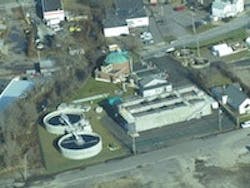Biological Nutrient Removal Restores River Habitat on Long Island
WesTech Eng. Inc. of Salt Lake City is helping to restore the river habitat of the Patchogue River and the Great South Bay by employing technologies for the removal of nutrients being discharged by the Patchogue Wastewater Treatment Plant (WWTP) located on the southern shore of Long Island in New York. As a part of this expansion and upgrade, WesTech supplied two STM-Aerotor Biological Nutrient Removal Systems and two 55-ft-diameter secondary clarifiers featuring the proprietary Clarifier Optimization Package (COP) design.
The Patchogue WWTP had a peak flow capacity of 0.5 million gal per day (mgd). The new STM-Aerotor systems and COP Clarifiers are part of an expansion that has increased the plant capacity to 0.8 mgd with provisions for near-term expansion to 1.2 mgd to meet increased population growth.
Historically, the Patchogue River has been used for fishing and clamming. With continued recreational use and increased discharges from nearby industries, the river habitat had become polluted and the local wildlife was threatened. Additional regulations were put into place to remediate this pollution and restore the waters for clamming. However, with the area’s growing population, the Patchogue WWTP was running out of capacity, making it difficult to continue to meet these new discharge regulations.
Source: WesTech Eng. Inc.
